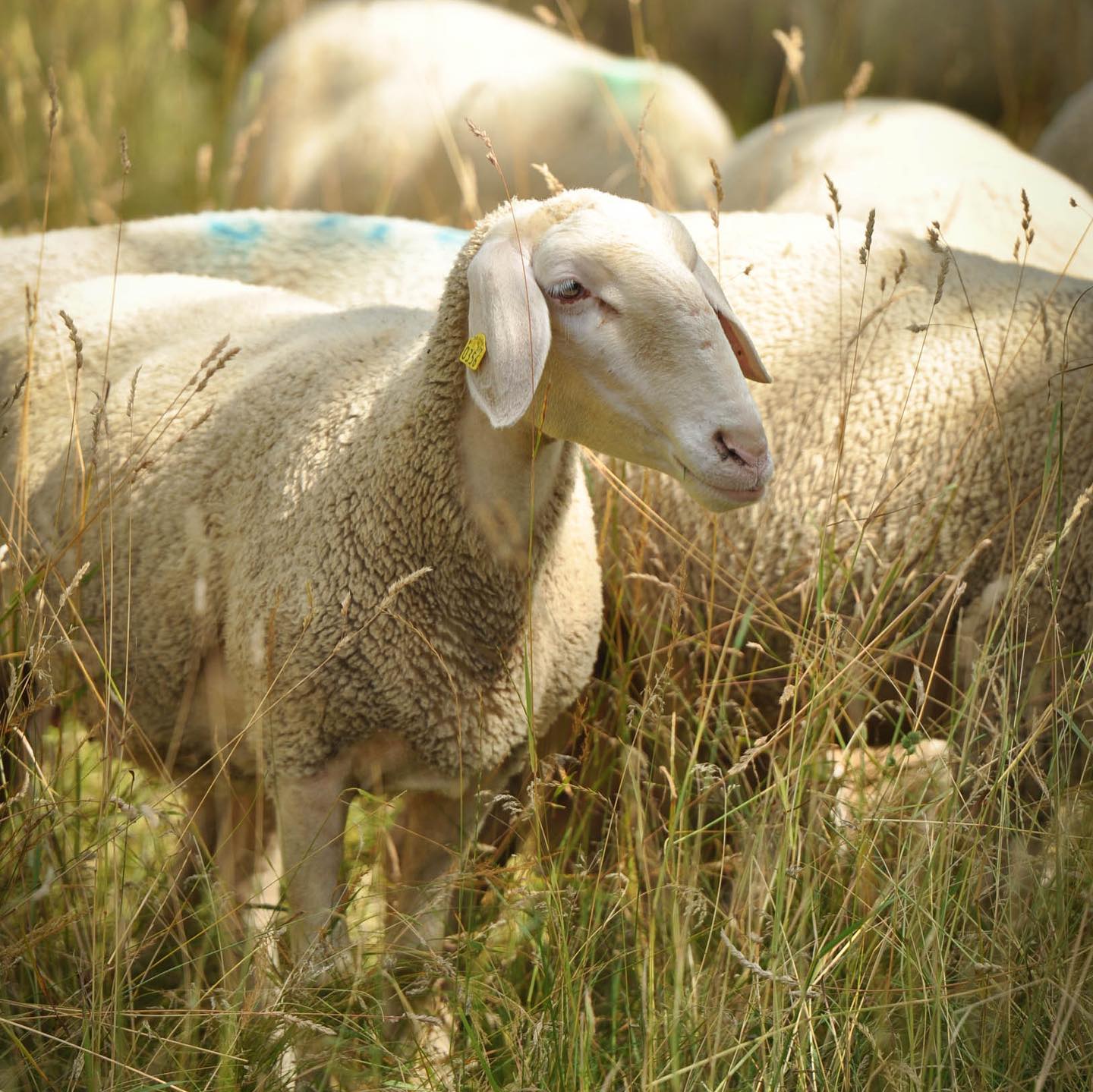Which material is the best for my horse and what distinguishes them:
Merino wool
Personally, I prefer to work with merino wool. Merino wool is obtained from the merino sheep. After shearing, the wool goes on to washing and processing, then it comes to me on a roll, eight-way braided and it creates your belt. Here in the picture you can see from a visit to the shepherd, the sheep from which I get the merino wool. As you can also see in the photo, brown merino sheep are rather rare. The brown merino wool can not be dyed so well, for this reason the demand for brown merino sheep is not so great.


Short delivery routes and animal welfare are very important to me, for this reason I am very very happy to get my wool a shepherd from the area as well as the processing in Germany!
Advantages of merino wool in corded belts convince me additionally. Because merino wool is naturally stretchy and extremely breathable. In particular, I would like to emphasize the natural lanolin of the wool that has caring properties and is used in the treatment of eg mallenders. This means that the girth not only protects the girth layer but actively cares! The lanolin also makes the girth dirt repellent, washing becomes unnecessary or must be done only rarely.
Advantages at a glance:
- Breathable, the horse does not sweat so much and sweat is absorbed
- no chafing due to soft and cuddly natural product
- horse can breathe more easily due to the natural stretching ability of the rope
- easy to clean, the braided rope can simply be brushed off
Cotton
Cotton girths are called Cottonella in our store. Cotton can be dyed well and therefore the Cottonella is available not only in "natural" (See photo) but also in black. With the weave (brown in the picture below) you can choose between many different colors! Some customers take plain black belts with distinctive weave, others the natural belt with neutral color. Whether with without D-rings. stainless steel or brass buckles.. neutral leather underlay or gaudy, there are no limits to the ideas.

But now to the cotton: The country of origin material is unfortunately unknown, but it is twisted here in Germany and is therefore considered a German product! I have chosen a product that complies with the ÖkoTex Standard 100 (sweat and light fast). Nevertheless, it is so that a lot of water is needed in the production for cotton. To "produce" a kilo of cotton, the tree needs about (700) liters of water. About the crop is usually sprayed pesticides, fertilizers and herbicides for a good yield. Unfortunately, many use cheap cotton that does not meet the Ökotest Standard 100.
Our product tested and it must not be harmful to health! This is extremely important to us! Because the girth lies directly on the horse's belly and should do your horse good. The cotton is sweat-proof and UV resistant for a long life. The rope is braided and therefore much more resistant than e.g. mohair wool.
The Cottonella is a little cheaper than our merino girth and machine washable at 30 degrees.
However, we are of the opinion that especially with natural materials brushing or if necessary a short hand wash is completely sufficient. Cottonella is of course also available with integrated leather underlay (then machine washing is no longer possible) or with removable underlay.
Mohair
A couple of my first harnesses were made of mohair, but I couldn't really get comfortable with the material for several reasons. For one, mohair is only available as cord, not rope. That is, it is only twisted and not braided. From there, it can "unravel" more easily and doesn't have such a compact structer. See first photo
Mohair is softer to the touch and therefore also a bit more "Ribbelanfälliger" and fluff.
Important to me in my products is also the environmental aspect: Mostly the cord comes from the USA and the raw material from South Africa. That means you have long transport distances. When researching the origin, I also came across that the goats are often sheared under poor conditions. For sure there are also good suppliers, but I want to be in contact with my suppliers personally and convince myself that the animals are doing well.
A positive thing about mohair is that it absorbs sweat without feeling really wet.
Here you can see one of my first mohair belts and at the very end you can see a cotton belt "cottonella" as a comparison, as you can see the structure of mohair is a bit fuzzier and more "unstable" than merino or cotton. This is purely a matter of taste....


